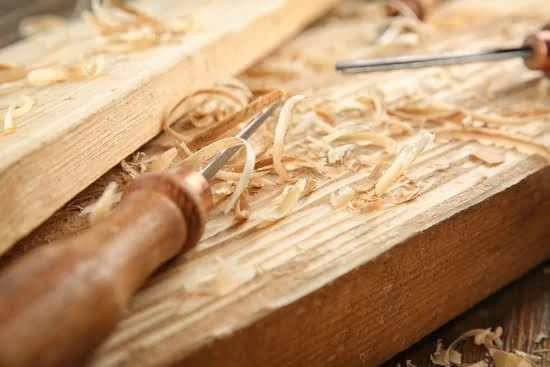Bent wood projects woodworking plans have been gaining popularity due to their unique and timeless appeal. From chairs to shelves, the versatility of bent wood in woodworking plans offers endless possibilities for creating stunning and functional furniture pieces. In this article, we will explore the beauty and versatility of bent wood projects in woodworking plans, and provide a comprehensive guide for readers to get started on their own creations.
The history of bent wood in woodworking dates back to ancient times, where it was used to create various tools and utensils. Over time, the art of bending wood has evolved, leading to innovative techniques and designs that are still admired today. From traditional steam bending methods to modern laminated techniques, the evolution of bending wood in woodworking has paved the way for creating durable and aesthetically pleasing furniture pieces.
When it comes to bent wood projects in woodworking plans, the options are truly limitless. Chairs, tables, shelves, and more can all be crafted using bent wood techniques, showcasing the flexibility and creativity that comes with working with this material. Not only do these projects offer unique designs, but they also boast durability and flexibility – making them a popular choice for both amateur and experienced woodworkers alike.
History of Bent Wood
The history of bent wood in woodworking is a fascinating journey that spans from ancient times to the modern day. The technique of bending wood has been utilized by various cultures for centuries, with evidence of its use dating back to ancient Egypt and China. In these early civilizations, bent wood was used to create everything from functional tools to intricate furniture pieces, showcasing the versatility and durability of this woodworking method.
One of the most well-known examples of bent wood projects in history is the iconic Thonet chair, which was first created in the 19th century using a process known as steam bending. This innovative technique allowed for the mass production of lightweight yet sturdy chairs, revolutionizing the way furniture was manufactured at the time. The Thonet chair remains a classic piece of design even today, highlighting the enduring appeal and timeless beauty of bent wood projects in woodworking plans.
In modern times, the art of bending wood has continued to evolve, with new techniques and technologies allowing for even more intricate and complex designs. From sculptural statement pieces to practical everyday furniture items, bent wood projects offer endless possibilities for creative expression in woodworking plans. By understanding the history and evolution of bending wood, woodworkers can gain a deeper appreciation for this age-old technique and its significance in shaping our built environment.
| History Key Points | Details |
|---|---|
| Ancient Use | Evidence dating back to ancient Egypt and China showcases use of bent wood for tools and furniture. |
| Thonet Chair | The iconic Thonet chair revolutionized furniture manufacturing in the 19th century through steam bending. |
| Modern Evolution | New techniques and technologies have allowed for intricate designs and creative expression in woodworking plans. |
Types of Bent Wood Projects
Bent wood projects offer an incredible range of possibilities for woodworking enthusiasts. From chairs and tables to shelves and more, the versatility of bent wood in woodworking plans is truly endless. One of the most appealing aspects of incorporating bent wood into woodworking projects is the ability to create unique and eye-catching designs that are both durable and flexible.
When it comes to bent wood projects in woodworking plans, chairs are a popular choice among craftsmen. The process of bending wood allows for the creation of elegantly curved and ergonomic chair designs that are not only visually stunning but also incredibly comfortable. Whether it’s a classic dining chair or a modern lounge chair, the options for incorporating bent wood into chair designs are limitless.
In addition to chairs, tables also present an exciting opportunity for woodworking enthusiasts to explore the beauty of bent wood. From coffee tables to side tables, bent wood can be used to create intricate patterns and organic shapes that add a touch of elegance and sophistication to any space. The natural flexibility and durability of bent wood make it an ideal choice for creating sturdy yet visually captivating table designs.
| Bent Wood Project Type | Description |
|---|---|
| Chairs | Ergonomic designs with elegant curves perfect for dining or lounging |
| Tables | Intricate patterns and organic shapes providing elegance and durability |
Benefits of Bent Wood Projects
Bent wood projects offer a myriad of benefits that make them a popular choice in woodworking plans. One of the most significant advantages of bent wood projects is their durability. By bending wood, it becomes stronger and less prone to breaking or splintering, making it ideal for furniture and other functional items. This durability ensures that bent wood projects can withstand the test of time, providing long-lasting and reliable pieces for any space.
In addition to durability, bent wood projects also offer flexibility in design. Unlike traditional woodworking techniques, bending wood allows for unique and intricate shapes to be achieved, resulting in one-of-a-kind pieces that stand out. From elegantly curved chair backs to flowing table legs, the possibilities for creative designs with bent wood are endless. This flexibility in design not only adds visual appeal but also opens up new opportunities for innovative and artistic woodworking plans.
Furthermore, the unique designs that can be achieved through bent wood projects set them apart from other woodworking techniques. The graceful curves and seamless lines created by bending wood add a touch of elegance and sophistication to any piece.
Whether it’s a contemporary chair or a classic shelf, bent wood projects bring a distinct aesthetic that enhances the overall look and feel of a space. With these benefits in mind, it’s no wonder that bent wood projects continue to be a popular choice among woodworking enthusiasts looking to create exceptional pieces with woodworking plans.
Tools and Materials
Bent wood projects in woodworking plans offer a unique and visually stunning way to create furniture and decor. Achieving the perfect bent wood project involves having the right tools and materials on hand. Whether you’re a beginner or experienced woodworker, having the necessary items is crucial for the success of your project.
One essential tool for bent wood projects is a steam box, which is used to heat and moisten the wood, making it pliable enough to bend without breaking. Additionally, clamps and forms are necessary for holding the wood in place as it dries in its curved shape. For smaller projects, a bending strap may be used to hold the components together during the bending process.
In terms of materials, different types of wood can be used for bent wood projects. While hardwoods such as oak and ash are commonly used due to their strength and flexibility, softwoods like pine can also be utilized.
It’s important to choose high-quality, straight-grained pieces of wood that will respond well to the bending process. Other essential materials include adhesive glue for laminating multiple layers of wood together, as well as sandpaper and finish for smoothing and protecting the completed project.
When embarking on a bent wood project using woodworking plans, ensuring that you have all the necessary tools and materials at your disposal will set you up for success. From steam boxes to clamps and various types of quality woods, having these items ready will make the process smoother and more enjoyable.
Step-by-Step Guide
Choosing the Right Wood
When it comes to creating bent wood projects in woodworking plans, choosing the right type of wood is crucial. In general, hardwoods such as oak, ash, and cherry are popular choices for bent wood projects due to their strength and flexibility.
However, some softwoods like cedar and pine can also be used for certain projects. It’s important to select wood that is free from knots and defects, as these can weaken the wood and make it more difficult to bend.
Preparing the Wood
Before beginning the bending process, it’s essential to prepare the wood properly. This may involve cutting the wood into strips of a specific thickness or width, depending on the project. In addition, it’s important to ensure that the wood is thoroughly dried before attempting to bend it. Green or wet wood is more likely to crack or break during the bending process.
Bending Techniques
There are several different techniques that can be used to bend wood in woodworking plans. One common technique is steam bending, where the wood is exposed to steam to soften it before being bent into shape.
Another technique is laminate bending, which involves gluing together thin layers of wood and then shaping them into the desired form. Each technique has its own advantages and challenges, so it’s important to choose the one that best suits your project and skill level when working on bent wood projects in woodworking plans.
Tips and Tricks
When it comes to creating bent wood projects in woodworking plans, there are some insider tips and tricks that can make the process much more successful. Whether you’re a beginner or experienced woodworker, these tips can help you achieve the perfect bent wood projects.
Understanding Wood Characteristics
One of the most important tips for working with bent wood is to understand the characteristics of different types of wood. Some woods are more flexible and bendable than others, so it’s essential to choose the right type of wood for your project. Additionally, understanding the grain direction and moisture content of the wood is crucial for successful bending.
Steam Bending Techniques
In many bent wood projects, steam bending is used to make the wood pliable enough to bend without breaking. One tip for successful steam bending is to ensure that the steam box is properly sealed to trap in as much moisture and heat as possible. Additionally, controlling the temperature and duration of steaming is key to achieving optimal flexibility in the wood.
Using Jigs and Molds
To achieve precise bends in woodworking plans, using jigs and molds can be incredibly beneficial. Creating custom jigs and molds specific to your project can help ensure consistent and accurate bends in the wood. These tools can also help maintain the shape of the bend while it dries, resulting in a more professional-looking finished product.
By incorporating these tips and tricks into your woodworking plans for bent wood projects, you can enhance your skills as a woodworker while creating stunning and unique pieces. Learning from experienced craftsmen and continuing to practice these techniques will further refine your ability to work with bent wood effectively.
Inspiration and Ideas
Bent wood projects in woodworking plans offer a wide range of design possibilities, and the beauty and versatility of these projects are truly inspiring. From chairs and tables to shelves and more, the unique curved designs that can be achieved through bent wood techniques add a touch of elegance to any woodworking project. Whether you’re a seasoned woodworker or just starting out, exploring stunning examples of bent wood projects can provide endless inspiration for your next woodworking endeavor.
To showcase the potential of bent wood projects, here are some stunning examples that demonstrate the beauty and creativity that can be achieved through this technique:
1. Bent Wood Chair: A classic example of bent wood craftsmanship, a carefully crafted chair with curved wooden elements can serve as both a functional piece of furniture and a work of art.
2. Bent Wood Shelves: Creating shelves using bent wood techniques adds a unique touch to any space. The gentle curves and organic shapes bring an element of nature into the design, making for an eye-catching addition to any room.
3. Bent Wood Table: Whether it’s a coffee table or a dining table, incorporating bent wood elements into the design can elevate the look and feel of the piece, creating a one-of-a-kind focal point for any space.
Drawing inspiration from these examples can help fuel your imagination and kickstart your creativity when planning your own bent wood projects. With the right tools, materials, and guidance, you too can create stunning bent wood pieces that will impress both yourself and others.
Ultimately, having access to inspirational examples is crucial for developing your own unique perspectives in woodworking. The possibilities with bent wood projects are endless, encouraging personal expression through design while also providing functional items for everyday use. Whether you’re replicating existing designs or creating something entirely new, being aware of what’s possible helps expand your horizons as a woodworking enthusiast.
Conclusion
In conclusion, bent wood projects offer an unparalleled beauty and appeal in woodworking plans. From the rich history of bending wood to the endless possibilities of creating chairs, tables, shelves, and more, the versatility of bent wood projects is truly remarkable.
The durability, flexibility, and unique designs that can be achieved through bending wood make it a highly sought-after technique in woodworking plans. With the right tools and materials, as well as a comprehensive step-by-step guide, anyone can embark on their own bent wood projects.
For those looking to get started on their own bent wood projects in woodworking plans, it is essential to have a detailed list of tools and materials at hand. Additionally, insider tips and tricks can be invaluable in achieving the perfect bend and overall success with the project. Drawing inspiration from stunning examples of bent wood projects can also ignite creativity and help readers bring their vision to life.
Ultimately, bent wood projects offer a rewarding journey in woodworking plans. Whether it’s embracing the ancient art of bending wood or exploring modern designs, there is something truly special about bringing a piece of furniture to life through this technique. As readers dive into the world of bent wood projects, they will discover not only the beauty and appeal but also the endless potential for creativity and craftsmanship in woodworking plans.
Frequently Asked Questions
What Woodworking Project Is Most Profitable?
The most profitable woodworking projects are often furniture pieces such as tables, chairs, and shelving units. Customized or unique pieces tend to fetch higher prices, especially when made from high-quality wood.
What Is a Good Bendable Wood?
A good bendable wood for woodworking projects is typically a hardwood like oak, ash, or hickory. These woods have natural flexibility and strength, making them suitable for bending without breaking.
How Do You Make a Bent Piece of Wood?
To make a bent piece of wood, you can use various methods such as steam bending or laminating thin strips together. Steam bending involves using steam to soften the wood fibers, allowing it to be easily shaped into curves.
Laminating thin strips involves gluing multiple layers of wood together to create a curved shape. Both methods require careful planning and proper equipment to achieve the desired results.

Hi everyone! I’m a woodworker and blogger, and this is my woodworking blog. In my blog, I share tips and tricks for woodworkers of all skill levels, as well as project ideas that you can try yourself.





